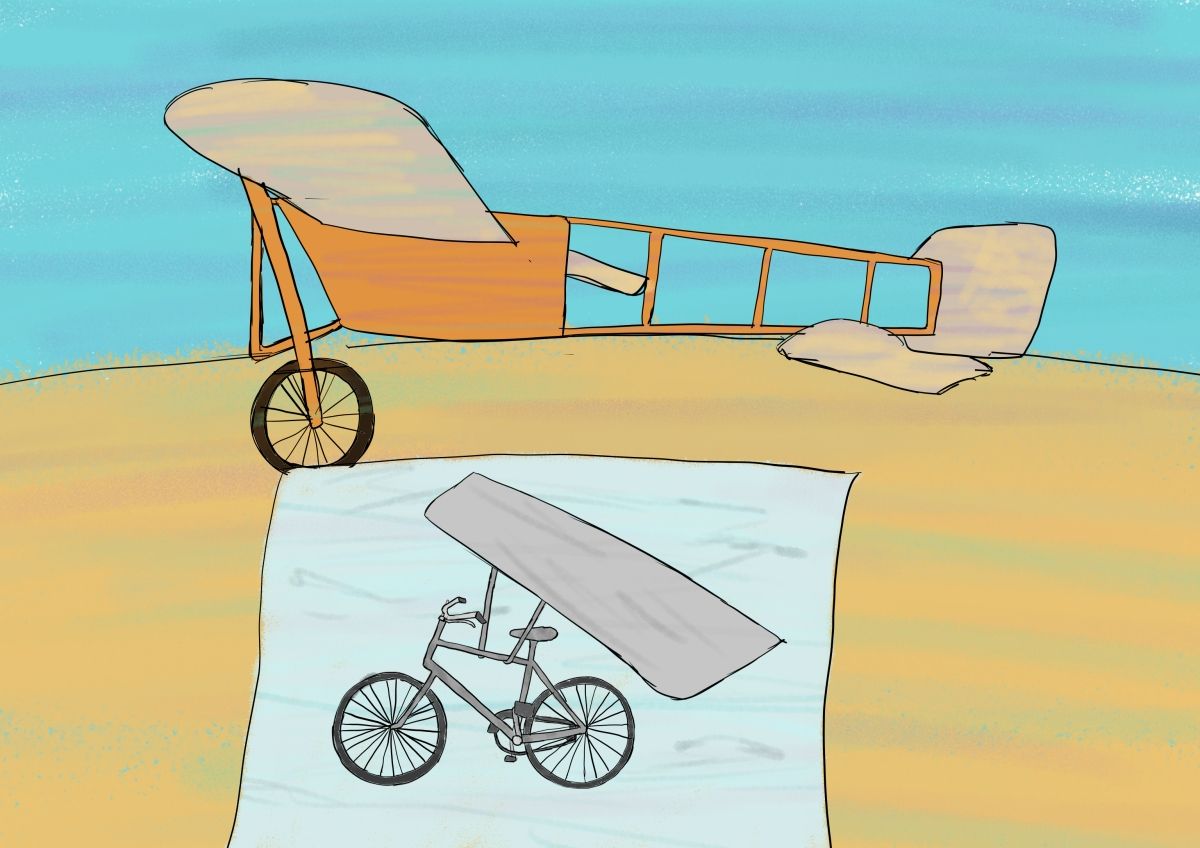Taking Flight
History is full of tales of inventors being credited with breakthroughs that had actually been achieved by others.

History is full of tales of inventors being credited with breakthroughs that had actually been achieved by others.
It’s April 11, 1903 in the south island of New Zealand. Richard Pearse transports his flying machine in a horse drawn cart to a level terrace above the Opihi River. He is accompanied by a gathering of children keen to help him achieve flight. His first attempt is unsuccessful and he crashes into a patch of shrubbery down the hill.
With some help from some help, he tries again and this time he succeeds. He takes off the cliff again and glides for half-mile along the side of the river. It was at this point that his engine overheated and began to lose power, forcing Richard to land in the riverbed. A local, Arthur Tozer, is crossing the river bed in a horse-drawn carriage at the time and is astonished to see Pearse fly directly over his head.
Think of the first manned flight and you will immediately think of the Wright brothers and their famous flight on the beach at Kitty Hawk, North Carolina, on 3rd December 1903. However, the above anecdote proves that Pearse beat them to it by over half a year.
Why haven’t we heard of him?
Well, Pearse laboured under three disadvantages: he was publicity-shy, he had a defective memory (don’t we all?) and he lived in the back-end of beyond, or New Zealand’s South Island. The accounts we have of his attempts to fly are all eyewitness reports, often those of individuals who were children at the time. Children were perhaps the most fascinated by his inventions and like on that autumn day near Opihi, his eager assistants. Furthermore, history is written by the victors, the old adage goes, or by those with the best public relations machine, as Richard Pearse might have said.
Here’s his story.
Richard, a farmer, was a serial inventor with a thing for bamboo. In 1902, he patented his first invention, a bamboo-framed bicycle powered by a vertical-drive pedal action and with a rod and rack gear system, integral tyre pumps and back-pedal rim-brakes. It was certainly ingenious and the like of which had not been seen before.
But like many a chap with an inventive streak at the time, Richard’s imagination was piqued by the early attempts to achieve powered flight.
It seems he had been mulling over the challenges in his mind from as early as 1899 and, by 1902, had come up with the design for a petrol engine.
Naturally, it was ingenious, consisting of two cylinders with pistons. The clever bit was that the pistons worked in either direction, effectively turning into a four-cylinder engine, capable of generating between fifteen and twenty-two horsepower.
Then Pearse built a plane to house the engine out of bamboo — naturally — as well as tubular steel, wire and canvas. It was the first to use proper ailerons and had a modern-style tricycle landing system, which meant that it could take off and land anywhere. It was also a monoplane.
In comparison with the Wright brothers’ prototypes at the time, it was superior save for a rather crude propeller system.
Having built his plane, the big question was; would it get off the ground?
Chronology is far from certain, not least because Pearse was reticent to publicise his experiments, which were often conducted in secrecy on his own extensive land. What eye-witness reports there seem somewhat vague on key points of his exploits. The Opihi Terrace flight was probably not his first flight, but it is the best documented. There were certainly other flights, it’s just unclear how successful they were.
However, it seems that as early as March 3, 1903, Pearse took to the air in a public demonstration of his flying machine. He manoeuvred his machine on to the Main Waitohi Road, which ran along the perimeter of his farm. The plane took off, perhaps reaching a height of some four metres, and travelled in a straight line for between fifty and 400 metres (there is no consensus amongst reports) before coming to rest in a gorse bush.
Undaunted, Pearse continued with his experiments.
Pearse never publicised his achievements and the local newspapers only picked up on the story in 1909, perhaps setting a world record for the slowest pack of newshounds.
Pearse himself sowed confusion in the chronology by claiming in a couple of letters, published in 1915 and 1928, that it was not until February or March 1904 that he ‘set out to solve the problem of aerial navigation.’
I know as I get older memory plays tricks on my grasp on chronology but there are enough independent witnesses to suggest that Pearse was experimenting with a version of manned, powered flight — if not exactly controlled — far earlier than that.
Pearse patented his aircraft in 1906 but then seemed to lose his interest in flight, frustrated that competitors from abroad were getting all the glory. In the 1930s, though, he did design, and partly build, an aircraft with foldable wings and tail, which could be stored in a garage.
The idea never took off.